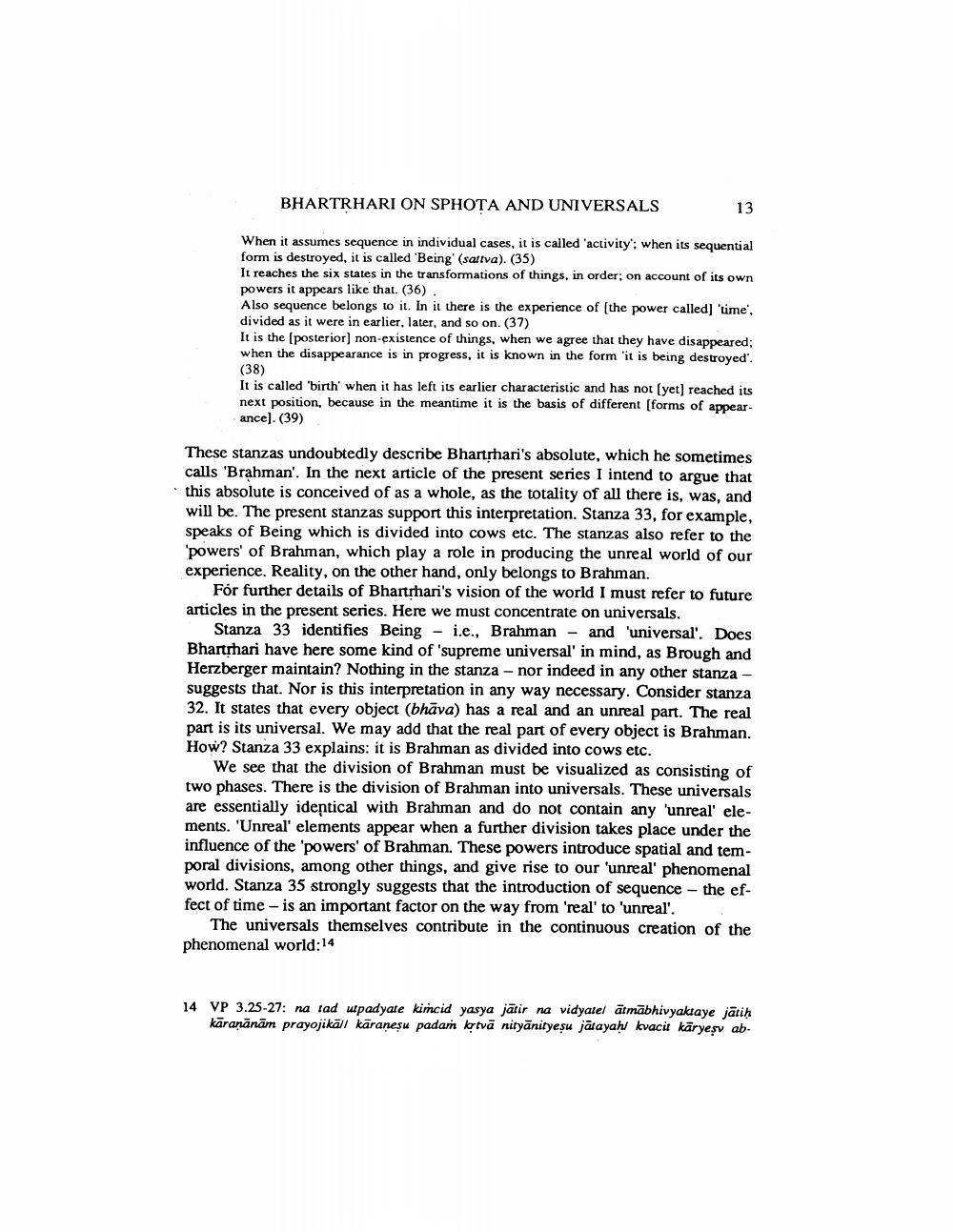Book Title: Studies On Bhartrhari 3 Author(s): Johannes Bronkhorst Publisher: Johannes Bronkhorst View full book textPage 9
________________ BHARTRHARI ON SPHOTA AND UNIVERSALS 13 When it assumes sequence in individual cases, it is called 'activity: when its sequential form is destroyed, it is called 'Being' (sattva). (35) It reaches the six states in the transformations of things, in order; on account of its own powers it appears like that. (36). Also sequence belongs to it. In it there is the experience of the power called] 'time, divided as it were in earlier, later, and so on. (37) It is the (posterior) non-existence of things, when we agree that they have disappeared; when the disappearance is in progress, it is known in the form it is being destroyed'. (38) It is called 'birth' when it has left its earlier characteristic and has not (yet) reached its next position, because in the meantime it is the basis of different [forms of appear ance). (39) These stanzas undoubtedly describe Bharthari's absolute, which he sometimes calls 'Brahman'. In the next article of the present series I intend to argue that this absolute is conceived of as a whole, as the totality of all there is, was, and will be. The present stanzas support this interpretation. Stanza 33, for example, speaks of Being which is divided into cows etc. The stanzas also refer to the "powers' of Brahman, which play a role in producing the unreal world of our experience. Reality, on the other hand, only belongs to Brahman. For further details of Bharthari's vision of the world I must refer to future articles in the present series. Here we must concentrate on universals. Stanza 33 identifies Being - i.e., Brahman - and 'universal'. Does Bhartrhari have here some kind of 'supreme universal' in mind, as Brough and Herzberger maintain? Nothing in the stanza - nor indeed in any other stanza - suggests that. Nor is this interpretation in any way necessary. Consider stanza 32. It states that every object (bhāva) has a real and an unreal part. The real part is its universal. We may add that the real part of every object is Brahman. How? Stanza 33 explains: it is Brahman as divided into cows etc. We see that the division of Brahman must be visualized as consisting of two phases. There is the division of Brahman into universals. These universals are essentially identical with Brahman and do not contain any 'unreal' elements. 'Unreal' elements appear when a further division takes place under the influence of the 'powers' of Brahman. These powers introduce spatial and temporal divisions, among other things, and give rise to our 'unreal phenomenal world. Stanza 35 strongly suggests that the introduction of sequence - the effect of time - is an important factor on the way from 'real' to 'unreal'. The universals themselves contribute in the continuous creation of the phenomenal world:14 14 VP 3.25-27: na tad ulpadyate kimcid yasya jatir na vidyalel ātmābhivyaktaye jātih kāraṇānām prayojikāll käranesu padar ketvā nityānityeșu jātaya / kvacit kāryeşv abPage Navigation
1 ... 7 8 9 10 11 12 13 14
